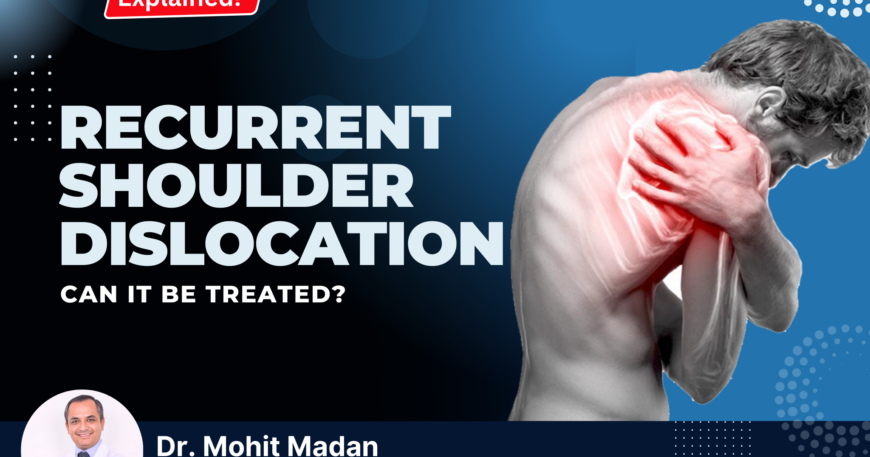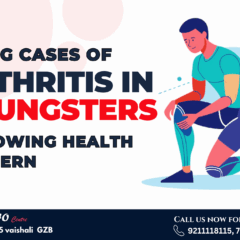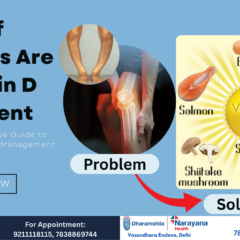
Recurrent Shoulder Dislocation
Shoulder dislocation is a common injury, especially among athletes, active individuals, and those who experience traumatic injuries. However, when the shoulder dislocates frequently, it becomes a condition known as recurrent shoulder dislocation. This condition can significantly affect one’s quality of life, causing pain, instability, and reduced mobility. The question many patients ask is: Can recurrent shoulder dislocation be treated? The answer is yes, and in this post, we’ll explore the causes, symptoms, and treatment options available for this debilitating condition.
Understanding Recurrent Shoulder Dislocation
The shoulder joint, also known as the glenohumeral joint, is the most mobile joint in the body, making it highly susceptible to dislocation. When the upper arm bone (humerus) slips out of the socket (glenoid), it results in a dislocated shoulder. For some, this is a one-time injury, but for others, the joint becomes unstable, and dislocation can happen repeatedly.
Recurrent shoulder dislocation often happens when:
- The ligaments and muscles surrounding the joint are weak or damaged.
- The original injury didn’t heal properly.
- There is a genetic predisposition to loose joints (hyperlaxity).
- High-impact sports or activities put continual stress on the joint.
Symptoms of Recurrent Shoulder Dislocation
If you experience frequent shoulder dislocations, you may notice symptoms such as:
- Frequent or repeated dislocations, even with minor movements.
- Pain and discomfort, especially when trying to lift or move the arm.
- A sensation of the shoulder feeling loose or slipping out of place.
- Swelling and bruising after a dislocation.
- Weakness and loss of motion in the affected shoulder.
It’s crucial to seek medical help if you’re experiencing these symptoms, as recurrent dislocations can cause further damage to the shoulder joint.
Can It Be Treated?
Yes, recurrent shoulder dislocation can be treated! There are both non-surgical and surgical treatment options, depending on the severity of the condition.
Non-Surgical Treatments
For less severe cases, or for those experiencing their first few dislocations, conservative treatments may be enough to stabilize the shoulder joint. These include:
- Physical Therapy: Strengthening the muscles around the shoulder can help stabilize the joint and prevent further dislocations. A tailored rehabilitation program can gradually increase shoulder mobility and strength.
- Immobilization: After an acute dislocation, keeping the shoulder immobile for a few weeks can help the joint heal. This is usually done with a sling or shoulder brace.
- Lifestyle Modifications: Avoiding activities or movements that cause dislocation is essential. Your doctor or physiotherapist may recommend modifications to daily activities to prevent further injury.
Surgical Treatments
For more serious cases or when non-surgical treatments are not effective, surgery may be the best option. The primary goal of surgery is to repair the damaged tissues and stabilize the shoulder joint.
- Arthroscopic Surgery (Keyhole Surgery): This minimally invasive procedure involves using a small camera (arthroscope) to guide the surgeon in repairing the damaged tissues around the shoulder joint. It is commonly used to fix tears in the ligaments or labrum that are causing instability.
- Open Surgery: In more complex cases, an open surgical approach may be needed. This procedure allows the surgeon to make more extensive repairs to the ligaments, tendons, or bones.
- Shoulder Stabilization Procedures: In cases of chronic dislocations, procedures such as the Latarjet procedure or Bankart repair are performed to prevent further dislocations. These involve reinforcing or reconstructing the bone and soft tissues to restore stability to the shoulder.
Post-Treatment Rehabilitation
Whether treated surgically or non-surgically, rehabilitation is a crucial part of the recovery process. A well-structured physiotherapy program can help:
- Restore the full range of motion.
- Strengthen the muscles surrounding the joint.
- Reduce the risk of future dislocations.
It’s important to follow your rehabilitation program diligently to ensure optimal recovery.
When to Seek Medical Help?
If you’ve experienced multiple shoulder dislocations or feel that your shoulder is constantly at risk of dislocating, it’s time to see an orthopedic specialist. Recurrent shoulder dislocation can lead to long-term damage if not treated, including arthritis or chronic pain. Early treatment can help prevent these complications and restore stability and function to your shoulder.
Conclusion
Recurrent shoulder dislocation is a treatable condition, but early intervention is key. Whether through physical therapy or surgical repair, there are several options available to help restore the stability of the shoulder joint. At My Ortho Centre, our team of experienced orthopedic surgeons and physiotherapists is dedicated to providing comprehensive care for recurrent shoulder dislocation, ensuring you can return to your daily activities pain-free.
If you’re dealing with frequent shoulder dislocations, don’t wait! Contact My Ortho Centre today to schedule a consultation and learn more about the treatment options available to you.
Call Now: +91 7838869744
Visit Us: My Ortho Centre – Shoulder Dislocation Treatment


